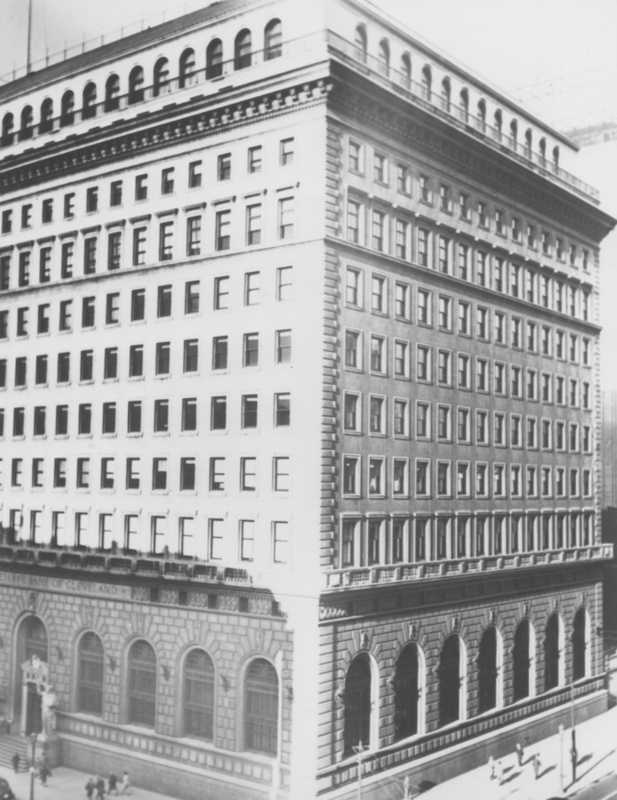United Bank Building

The nine-story, $1.5 million United Bank Building opened in 1925 as the tallest and largest commercial building on Cleveland's west side. It was one of the last of a series of classical bank buildings constructed in Cleveland during the 1910s and 1920s, a golden age for the city's banking industry. The selection of Cleveland in 1914 as one of twelve cities to house a branch of the new Federal Reserve Bank helped fuel this growth, as did the city's emergence as a major industrial center around the turn of the 20th century. Many of the city's banks, however, did not make it through the stock market crash of October 1929 and the subsequent Great Depression. The United Banking & Trust Company, founded on Cleveland's west side in the 1880s, was a victim of the crash, and it merged with Central National Bank just a month afterwards in November 1929.
The Cleveland architecture firm Walker and Weeks designed the United Bank Building and nearly 20 other banks throughout the city in the 1910s and 1920s. Though perhaps best known in Cleveland for its monumental public buildings like Severance Hall, Municipal Stadium, and the Public Auditorium, Walker and Weeks eventually became one of the most sought after bank builders in the Midwest, designing scores of them across the region. Still standing in Cleveland today are, most notably, the Federal Reserve Bank (1923), the Superior Building at 815 Superior Avenue (1922), and the Guardian Building at 629 Euclid Avenue, which the firm remodeled in 1915. Nearly all of the firm's banks from the pre-Depression era, including United Bank, were classical in design, resulting in imposing and dignified buildings with stone facades that featured tall columns or arches. The United Bank Building's main entrance sits under two columns framing a temple front facing West 25th Street, while its Lorain Avenue side features six arched windows. The main bank lobby was itself richly adorned with marble columns, a coffered ceiling, and twelve bronze light fixtures--all ornamented with gold.
The grandeur of these banks was meant to instill confidence in depositors who often worried about losing their savings if a bank were to fail. When the stock market crashed in 1929, however, marble columns and gold detailing were not enough to save a number of banks from going under. Classical architecture declined in popularity around this time, too, as more modern styles like art deco took hold.
Today, the United Bank Building, now occupied by county offices, provides a window into what was perhaps the city's most prosperous era. While the good times didn't last, at least some of the magnificent banks built during this period have.
Images






